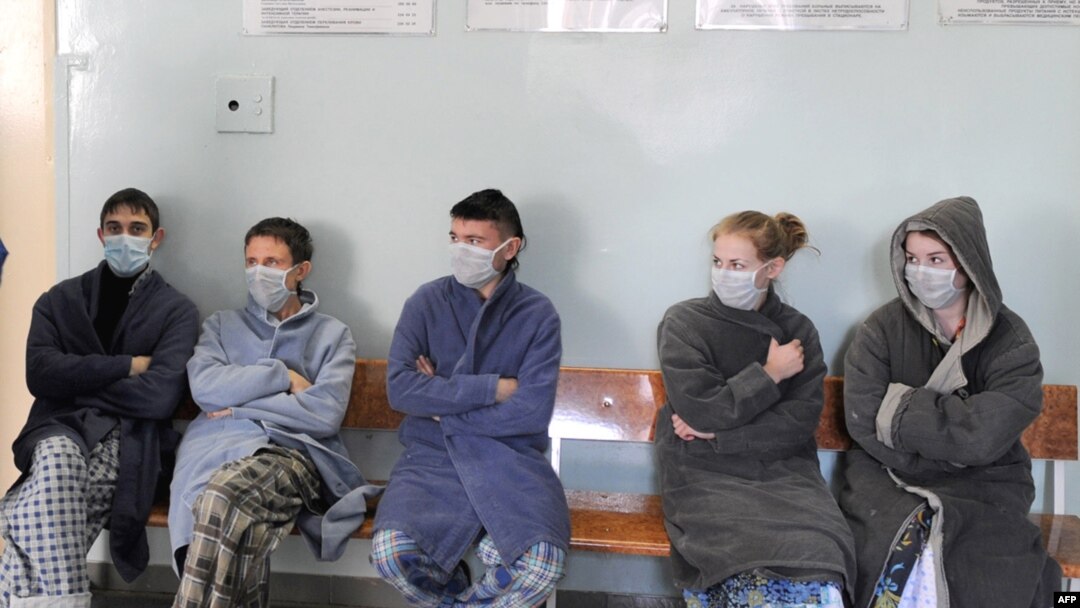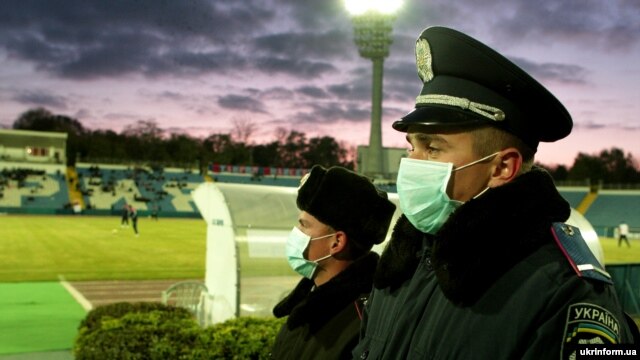* Correction appended
Just about everybody knows the H1N1 virus -- popularly known as swine flu -- has spread around the globe since it was first identified in Mexico in April.
But few people realize that the spread has been so thorough that doctors now consider the H1N1 virus to be the dominant flu strain in the world today.
That means that doctors will assume that you have swine flu if you fall ill with influenza this season.
"At the moment, within influenza activity, we are seeing that across the globe the majority of influenza activity is caused by the H1N1 virus,” says Gregory Hartl, a spokesperson on epidemic and pandemic diseases at the Geneva-based World Health Organization.
Maureen Baker, a doctor at the Royal College of General Practitioners in London, says that in most countries, doctors diagnose influenza by looking at the symptoms. But symptoms of all influenza, including swine flu, are so similar that doctors currently assume the patient has contracted the dominant flu strain of the moment, H1N1, even when a lab test has not confirmed that fact. That could help account for the skyrocketing number of swine flu cases, such as in Ukraine, where the number has hit almost 500,000.
The only way to know for sure, says Baker, is with a laboratory test. But he says that is time-consuming.
“In terms of a definitive 'this is definitely swine flu' [diagnosis], that is done by taking a [nose and throat] swab and then growing the virus, and that will take several days,” he says.
Growing Sense Of Panic
In countries like Ukraine, where medical facilities are too stretched to do extensive lab work, the growing sense of public panic over H1N1 may be fueled by uncertainty regarding the real extent of the disease.
Police try to protect themselves as they protect others during a football match in Simferopol on November 2.
Even lab confirmation in ordinary hospitals may not be enough to establish precisely which cases are H1N1 infections. Absolute precision can only be achieved by a handful of specialized centers in a few countries that work closely with the WHO to identify and track epidemics. As public fears of swine flu grow with the start of the flu season, countries including Ukraine and Afghanistan have temporarily closed schools, while others like Serbia have extended the autumn school vacation. In all cases, the hope is to stop the virus from spreading more quickly.
But doctors say the prospect of falling ill with H1N1 is not something that should create panic. There are steps one can take to diminish the chances of being infected and, in most cases, even when people fall ill with the virus, the flu passes after a few days.
Still, one reason swine flu has received so much public attention is that it targets segments of the population that are not usually particularly vulnerable to influenza -- including the young and healthy.
And John Oxford, professor of virology at Barts and The London School of Medicine and Dentistry, says H1N1 is more dangerous than ordinary flu because of its ability to penetrate deeper into the lungs.
Also, he adds, the strain has a “sting in its tail.”
“The sting in the tail is the way it is going for pregnant women. A pregnant woman died yesterday [November 2] in England, for example. So this is rather unprecedented, that it is targeting pregnant women -- that is a worrying factor," Oxford says.
"And also the number of young children. Deaths are accumulating in young children, particularly under the age of about 5.”
Predictions Difficult
More than half of the hospitalizations and nearly one-quarter of deaths in the United States from H1N1 have involved people under the age of 25 -- something unusual with ordinary influenza.
But predicting actual death rates from swine flu is still an uncertain science, with new studies emerging daily. Some of these show that, even if swine flu has been dubbed a “young persons’ disease," the group most likely to die from it are people over the age of 50 who are hospitalized with severe cases.
U.S. researchers on November 3 reported an overall fatality rate of 11 percent among the 1,088 cases of hospitalization or death due to swine flu in California between April 23 and August 11.
But while 7 percent of the hospitalized children under the age of 18 died from swine flu, the rate of deaths among hospitalized people aged 50 years or older was 18 to 20 percent.
The WHO’s global plan for confronting swine flu centers on encouraging countries to take preventive measures emphasizing public hygiene and encouraging them to stockpile antiviral drugs, like Tamiflu and Relenza, to treat the most severe cases.
In the West, governments are also investing in quantities of new vaccines in hopes of beginning to immunize the most at-risk groups this year so that there will be fewer people vulnerable to the disease next flu season.
But in many countries, ordinary people are already trying to take their own measures against the disease. Sales of gauze face masks have shot up. Television news announcers have even urged the public to buy masks, fueling a sense of desperation.
However, doctors say face masks provide little protection for healthy people. That is because they soon get moist from exhaled air, and lose their ability to act as filters.
“If you are the person who is ill and you sneeze and you have got a mask on, then wearing the mask probably reduces the chance of other people nearby catching it," Baker says. "But if you are [a healthy person] wearing a mask all day, then the mask become ineffective, because masks get wet and because they stop working in any case. There are only certain, very specialized masks that effectively filter out the size of the virus.”
Oxford agrees. He says that when a population is scrambling for gauze masks, that is a sign that the government has not adequately prepared the public for dealing with the pandemic.
“If you see an image of a lady sitting in a bus in the Ukraine with a mask on, once you see that image you realize, you begin to suspect, that here is a country that has not prepared itself and it is a last-minute scramble,” Oxford says.
Wash Your Hands
Doctors say that people can best protect themselves by washing their hands frequently with soap and avoiding putting their unwashed hands to their face. The H1N1 virus is passed by sneezing and from contact with infected surfaces and enters the body through the nose and mouth.
Like any pandemic, swine flu is giving rise to a host of advice from both medical and folk remedy specialists.
Some press attention has been given to suggestions that people born before 1957 may be immune to the disease because they would have already passed successfully through a pandemic similar to H1N1 in that year.
Baker says that theory has yet to be proven, but at least provides one explanation why fewer older people, proportional to their numbers in the population, are getting infected than are other population segments.
But WHO spokesman Hartl says another theory -- that people who passed through another pandemic in 1976 are also protected -- is wrong. The virus in that pandemic bore little similarity to the H1N1 strain.
The WHO said on October 30 that more than 5,700 people have died worldwide since the H1N1 virus was identified some six months ago. It has already claimed the lives of more children than seasonal flu typically does during an entire flu season.
Ordinary seasonal influenza claims the lives of 250,000 to 500,000 people around the world every year. Usually, nine out of 10 of those victims are people over 65 who already have health problems that make the flu makes worse.
* Two paragraphs in this story have been changed to clarify swine flu data released by U.S. researchers on November 3.



